========================================================================
Cybernetics in the 3rd Millennium (C3M) Volume 11 Number 1, Jul. 2013
Alan B. Scrivener — www.well.com/user/abs — mailto:abs@well.com
========================================================================
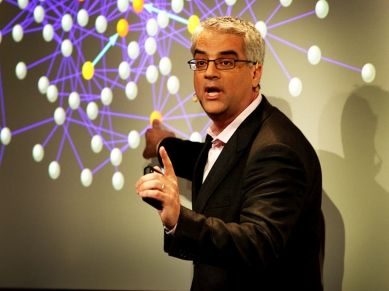
 screen shots from TED Talk "Nicholas Christakis:
How social networks predict epidemics"
http://www.ted.com/talks/nicholas_christakis_
screen shots from TED Talk "Nicholas Christakis:
How social networks predict epidemics"
http://www.ted.com/talks/nicholas_christakis_
how_social_networks_predict_epidemics.html
In this issue:
Short Subjects from the Email Bag
- Nora Bateson announced that her documentary about her father, Gregory
Bateson, "An Ecology of Mind" (2011), is now available on DVD at Amazon. Huzzah!
( www.amazon.com/exec/obidos/ASIN/B00CAUTPI6/hip-20 )
I have my copy but haven't seen it yet; hope to review it next time.
Also, Nora is holding a workshop in Berkeley in August.
( centerforpersonalgrowth.typepad.com/blog/an-ecology-of-mind-learning-play-and-epistemology.html )
- Steve Premo wrote (re: "Teaching Calculus to a 16-Year-Old"):
Howard Swann (Prof. E McSquared) is a friend of mine, as is John Johnson, the
illustrator of the calculus primer! They both should be listed as authors,
as is customary with comic books. The creators are the writer and the artist.
It's like music, where both the composer and lyricist get credit for a song.
Fixed in the archives, thanks for the suggestion!
- Will Ackel wrote (re: "Teaching Calculus to a 16-Year-Old"):
What a fascinating challenge — to educate a new mind. With the
skyrocketing cost of a college education, it has become fashionable to
say that we are facing a crisis in higher education. But with the Internet,
Khan Academy, Udacity, Wikipedia, Google Books, etc. it is now easier than
ever to get an advanced education for free. But the piece of the paper that
people take as proof that you know something now costs upwards of $100,000.
So what we really have is a crisis of certification, not education. As
always, most people seem to think that the solution is more government
funding to subsidize an outmoded, inefficient, and fundamentally unaffordable
educational establishment. But what is really needed is a new kind of diploma
that stands for what you know, and what you can do, rather that where you've
been, and how much you can afford. Ideally it would go beyond that to reflect
personal qualities like integrity, creativity, and open mindedness. Our
antiquated system of higher education was well adapted to a time when
education, recognition, and opportunity were conferred on only a privileged
few. It doesn't work so well in a time when anyone who lacks credentials
is consigned to the kinds of jobs that no longer exist in this country.
Your 'zine also reminded me of a wacky idea I once had while pondering the
quantum-mechanical phenomenon know as "spooky action at a distance." What
troubled me was this notion of "spookiness." It only seems spooky because by
the time people are introduced to it, they've been conditioned to expect the
universe to behave otherwise. The same could be said of all of quantum
mechanics, relativity, multi-dimensional string theory, etc. — things we
find counter-intuitive because by the time we hear about them we have lost
most of the plasticity of mind that wold be required to grok them. And yet
these things are reality. An educated person ought to see them as the
perfectly natural phenomena that they are. Hence my thought: wouldn't
it be interesting to immerse a child in reality from the earliest age?
How could this be done with virtual reality, computer games, architecture,
etc.? Isn't it ironic that virtual reality could be just the right tool to
help people see real reality? What sorts of insights might be apparent to
a person who perceives the universe as the relativistic, quantum-mechanical,
multi-dimensional construct that we know it is?
- Another surprising translation:
Hello,
I have translated a post in your blog in Polish language. The translated
version you can find in my blog here:
cheap.de/science/co-hath-wolfram-kutego
Please if it is possible put a link on my translation.
All the best.
Katia Osipova
- David Ing wrote:
Alan,
I happened across your page at http://www.well.com/~abs/curriculum.html.
I've posted a link to it on Facebook, in the Systems Sciences group at
http://www.facebook.com/groups/2391509563.
If you're in the Bay Area, you might (or might not) be interested in
http://isss.org/world/2012-call-for-participation.
We'll certainly have descendants of your way of thinking.
[Ed: Due to a hiatus in this 'zine the above conference came and went before I
was able to share this information. In July of 2013 the 57th World Conference
of the International Society for the Systems Sciences is being held in Hai Phong,
Viet Nam, with the theme "Curating the Conditions for a Thrivable Planet."
http://isss.org/world/hai-phong-city-57th-annual-meeting ]
I blog at http://coevolving.com. I know that
you'll appreciate that domain name.
David Ing
President (2011-2012)
International Society for the Systems Sciences
- from the ieee_vis email list (IEEE = Institute of Electrical and
Electronic Engineers; vis = visualization):
Dear Colleagues:
This is to announce the availability of a website at the Center for Perceptual
Systems for processing images with new algorithms based on natural scenes
statistics: http://rcm.cps.utexas.edu. The primary aim of the website is
to obtain feedback on the quality of the algorithms, and to provide a simple
means for other laboratories to compare their algorithms with those developed
here. However, you may also find the algorithms useful for processing your
own images. This interactive website allows the user to apply the algorithms
to any image and get results in real-time. Currently the tools consist of
denoising (noise reduction), and up-sampling (image enlargement). Other
tools will be added as they become available.
An associated website provides publications describing the natural scene
statistics and the algorithms: http://www.cps.utexas.edu/natural_scenes/.
This website also provides examples of the processed images, comparisons
with other algorithms, and downloadable databases of natural images.
Feedback and/or suggestions are welcome.
Bill Geisler & Jeff Perry
ieee_vis mailing list
Note that this email list is used for the conference calls for the
EG/IEEE VGTC Symposium on Visualization, IEEE Visualization conference,
and other events.
If you have questions about the conference, the submission, or
related topics, please contact the respective conference co-chairs.
For address changes, removal or duplicates, visit
https://listserv.uni-tuebingen.de/mailman/listinfo/ieee_vis
- I considered applying for this, and probably will next year instead:
The eleventh annual Wolfram Science Summer School (formerly the
NKS Summer School) is [soon], and we would like to
invite you to apply. The three-week, tuition-free summer program
will be held at Bentley University in Waltham, Massachusetts from
July 1 through July 19, 2013. The Wolfram Science Summer School
is hosted by Wolfram Research, makers of Mathematica and the
computational knowledge engine Wolfram|Alpha, and Stephen
Wolfram, world-renowned author of A New Kind of Science (NKS).
http://www.wolframscience.com/summerschool
We are looking for highly motivated individuals who want to get
involved with original research at the frontiers of science. Our
participants come from many diverse backgrounds, but share a
common passion to discover and explore cutting-edge ideas. Over
the past 10 years, they have included graduate students,
undergraduates, professors, industry professionals, artists, and
even a few exceptional high school students.
If accepted to the Summer School, you will work directly with
others in the Wolfram Science community, including Stephen
Wolfram and a staff of instructors who have made significant
contributions to NKS and Wolfram|Alpha. You will develop your own
original project that could become the foundation of published
papers or your thesis.
Take a look at the lecture notes from previous years to get a
sense of what topics will be covered:
http://www.wolframscience.com/summerschool/resources
If you're serious about getting involved with innovative ideas at
the core of Wolfram Science and NKS, you should consider applying
as soon as possible.
Apply online at:
http://www.wolframscience.com/summerschool/application.cgi
Todd Rowland, PhD
Wolfram Science Summer School Academic Director
Catherine Boucher, PhD
Wolfram Science Summer School Program Director
What Just Happened?
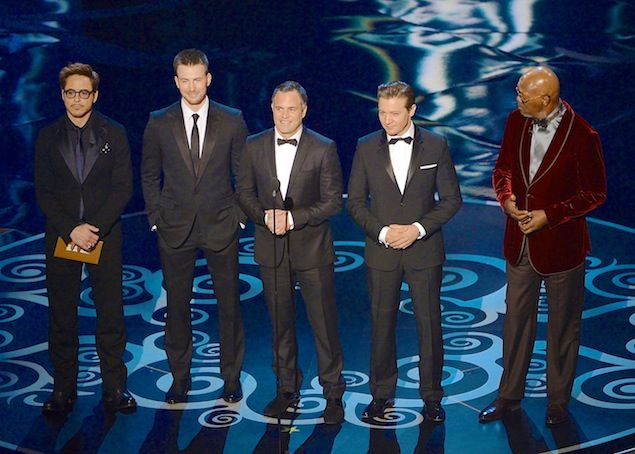 Robert Downy, Jr., Chris Evans, Mark Ruffalo, Jeremy
Renner, and Samuel Jackson at the Oscars, 24 Feb. 2013
www.gq.com/style/blogs/the-gq-eye/2013/02/gq-addresses-the-avengers-men-at-the-oscars.html
Robert Downy, Jr., Chris Evans, Mark Ruffalo, Jeremy
Renner, and Samuel Jackson at the Oscars, 24 Feb. 2013
www.gq.com/style/blogs/the-gq-eye/2013/02/gq-addresses-the-avengers-men-at-the-oscars.html
"I knew what I was looking at. I realized that without making the slightest
effort I had come upon one of those utterances in search of which psychoanalysts
and State Department monitors of the Moscow or Belgrade press are willing to
endure a lifetime of tedium: namely, the seemingly innocuous obiter dicta,
the words in passing, that give the game away."
— Tom Wolfe, The Painted Word (book, 1975)
(
www.amazon.com/exec/obidos/ASIN/0312427581/hip-20 )
This past winter I attended the Annie Awards, held at U.C.L.A. on 2 February
2013, to honor animation the way the Oscars honor film. This was my third
annual visit with my wife and daughter.
(
annieawards.org )
(
www.asifa-hollywood.org/wreck-it-ralph-wins-best-animated-film-at-annie-awards
I remember the the award for "Outstanding Achievement, Animated Effects in a
Live Action Production" went to a group of folks at Industrial Light & Magic for
"The Avengers." (The other nominees were for "The Amazing Spiderman," "John
Carter" and "Battleship.")
Also, there was an award for "Outstanding Achievement, Character Animation
in a Live Action Production" and 3D artists and animators at Rhythm & Hues
were nominated twice, for an orangutan and a tiger in "Life of Pi." (The tiger
won.)
(
annieawards.org/nominees )
And I
think one of the presenters, or else a live blogger I saw on my
iPhone during the ceremony, made a snotty remark about how it's a farce
to give a "best actor" Oscar to someone playing (for example) the Hulk,
when most of his performance is computer-animated.
A few weeks later on Sun. 24 Feb. 2013 we watched the Academy Awards with
friends. Several odd things happened that night. First, five actors from the
movie "The Avengers" — pictured above — came out to present a
visual effects award. (I immediately blurted "Where's Black Widow? She's not
an Avenger?") I would really like to know what was on the teleprompter at that
moment, but whatever it was, Samuel L. Jackson refused to say it. Robert
Downey, Jr. tried to continue reading the scripted remarks, and then Jackson
cut him off. Here was the exchange:
Jackson: "And here are the nominees for..."
Ruffalo: "Whoa, whoa, whoa, wait."
Jackson: "Yeah?"
Ruffalo: "You just skipped a big chunk."
Downey: "You did."
Jackson: "I did?"
Downey: "Yeah, you just went [unintelligible]... Yeah, it's important that
visual effects be given the respect they deserve. This was a huge
year for visual..."
Jackson: "Is that really something you want to say?"
Downey: "Just roll it back. This is what they want."
Jackson: "Let's just give them the respect they deserve and give them the
damned award. Come on!"
Downey: "They create worlds, and—"
Jackson: [cutting off Downey, who shrugs] "Here are the nominees for achievement
in Visual Effects."
(Video of this has been popping up on the web and then been "Whack-A-Moled" away
by somebody using DCMA takedown requests, but I found one still up.
culturewarreporters.com/tag/acceptance-speech )
The award went to a team from Rhythm and Hues for "The Life of Pi," and the
acceptance speech was given by team leader Bill Westenhofer. He managed to
point out:
"The irony is not lost on any of us up here that in a film whose central premise
is to ask the audience what's real and not real, most of what you see is, well,
it's fake. That's the magic of visual effects"
He thanked a number of people, including the director Ang Lee, and ended up
adding:
"I want to thank all the artists working on this film for over a year, including
Rhythm and Hues. Sadly, Rhythm and Hues is having severe financial difficulties
right now, and you'll remember..."
But then, less than a minute into his speech he was drowned out by the "Jaws"
music used to silence recipients in overtime. Shortly afterwards David S. Cohen
of Variety Tweeted about this:
"Ok, #Oscars conspiracy theorists: music came up on #vfx winners in 44.5 secs.
Next winner, Claudio Miranda, spoke almost 60 secs, no music."
I immediately jumped on my iPhone and found out there were people dressed in
green-screen suits from Rhythm and Hues protesting in front of the Dolby
(nee Kodak) Theater right that moment, including artists that had worked on
that very movie that was taking home Oscars and had not been paid. Their
signs referred to a "Piece of the Pi."
Later, post-awards interviews filled us in on Westenhofer's beef.
(
www.cartoonbrew.com/ideas-commentary/an-uninterrupted-statement-
from-life-of-pi-vfx-winner-bill-westenhofer-78395.html )
Then, things got even weirder. Ang Li won for Best Director for "Life of Pi"
and didn't thank the effects artists. I was floored. This was a movie that
was nearly all Computer-Generated Imagery (CGI), and he didn't think the digital
artists deserved a mention?
The blogosphere went nuts with this. My own daughter posted about it on Tumblr,
and assembled a nice list of links to other analysis.
(
thefoolwhomakesfoolsofthemall.tumblr.com/tagged/oscars-2013 )
After the fact, one of the best summaries of the issues facing R&H came
from a Disney blog which mentioned that they'd made the images for the
attraction "It's Tough to Be a Bug."
(
micechat.com/24684-its-tough-to-be-a-bust-the-rhythm-and-hues-bankruptcy/ )
But I'm still left scratching my head and asking "What just happened?" Did
a long-simmering squabble, or even a multi-way dust-up between many parties,
just spill into public view? I think I understand why the VFX folk are
unhappy. But I don't get the other side. Why are big name stars like
Samuel L. Jackson willing to stand up on a hugely-watched show and diss
the digital artists? Why is the Academy of Motion Picture Arts and Sciences
willing to silence an award-winner who stands up for fellow VFX artists?
What's their beef?
Here are my very tentative theories:
- above and below the line
Traditionally Hollywood has separated the people who collaborate on a movie
into above the line (creative) and below the line (non-creative). When effects
work was done using miniatures, matte paintings and rigged sets (so-called practical
effects), the work was slotted into the below the line category. Effects workers
have complained before that they get less screen credit than the caterers, who
have seniority and so are listed first. It has been standard practice in the
movie industry to, almost reflexively, knock the below the line people to keep
them down, and discourage them from claiming any creative credit.
- Union vs Non-Union
I have pointed out before that the transition from 2D hand-drawn cartoons (like
"Snow White") to 3D computer-generated cartoons (like "Toy Story") is also a
transition from union to non-union workers. Similarly, the transition from
practical effects to digital effects is a move away from unions. I still have
a tee shirt I bought at a fundraiser for the "Alliance of Special Effects &
Pyrotechnics Operators" (ASEPO).
These are the folks who built models and blew them up before the CGI
revolution. There is no such union for the digital artists. Jackson &
the Oscar folks may be showing union solidarity.
- Artists vs Geeks
Despite the fact that R&H is actually in El Segundo, and dozens of other VFX
companies are in Los Angeles County, I've noticed there is a sort of "North vs.
South" vibe to the friction between (non-technical) artists and (technical)
"geeks" in the movie biz. Steve Jobs and George Lucas both saw this rift and
placed their tech-savvy companies (Pixar and ILM) in Northern California. Steve
Katzenberg at Dreamworks bought Silicon-Valley-based Pacific Data Images (PDI)
for his visual effects arm. I've mentioned this elsewhere, but Hollywood
really hates to invest in tech. They want somebody else to take the risk.
The tech Oscars usually go to some "nut in a garage" who invented something
on his or her own dime and then sold it to a major studio. We may just be
seeing evidence of this rift.
- the threat of the Virtual Actor
Okay, the most satisfying theory I have, though not the most plausible, is
this: since the early 1990s these geeks have been talking about Virtual
Actors (VActorsTM), synthespians, autonomous agents and other
forms of jiggery-pokery that are supposed to somehow obsolesce and replace
real human actors. Actually, only a vocal minority have talked about this,
but the acting community sees it as coming from the tech community, and I
think they're sick of hearing about it. I distinctly recall an L.A. SIGGRAPH
meeting in the 1990s when a Technical Director (TD) pointed out that a celebrity
who'd shot a Fritos commercial (Jay Leno?) wasn't hired back to reshoot it
when Frito-Lay changed the bag; they just pasted in a new bag with CGI, using
the same tools showcased in movies like "Forrest Gump." This TD wanted to
set a marker, that here was a documented case, possibly the first, of an actor
not getting work because of CGI.
So this may be why the actors are gunning for the digital artists.
Actually, I believe the idea of fully replacing human actors (besides extras)
is a fraud, as I discuss in greater length in my N-part article, "If It's Just
a Virtual Actor, Then Why Am I Feeling Real Emotions?" elsewhere in this 'zine.
As a proof point I offer that the most famous robot in movie history, R2-D2
was played by one human (comedian Kenny Baker) and voiced by another (sound
designer Ben Burtt).
I am especially eager to find out out what you, my readers, think of all this.
Email me your comments and I may reprint them.
Further Excursions in Graph Theory and
Social Networks
Nauru Graph, the generalized Peterson Graph, from
mathworld.wolfram.com/NauruGraph.html
Divya: Everybody on campus was using it. "Facebook me" was the common expression
after two weeks. And Mark was the biggest thing on a campus that included 19 Nobel
laureates, 15 Pulitzer prize winners, 2 future Olympians and a movie star.
Sy: Who's the movie star?
Divya: Does it matter?
— The Social Network (movie, 2010)
( www.amazon.com/exec/obidos/ASIN/_B0034G4P7G/hip-20 )
I have been continuing to delve more deeply into the mathematics and sociology
of social networks. Here is an update on my explorations.
I previously recommended some popular books on the subject:
- Nexus: Small Worlds and the Groundbreaking Science of Networks (2003) by
Maek Buchanan
( www.amazon.com/exec/obidos/ASIN/0393324427/hip-20 )
 | A layperson's introduction to graph theory and network theory as applied to
social networks, with an emphasis on recent developments. |
- Six Degrees: The Science of a Connected Age (2004) by Duncan J. Watts
( www.amazon.com/exec/obidos/ASIN/0393325423/hip-20 )
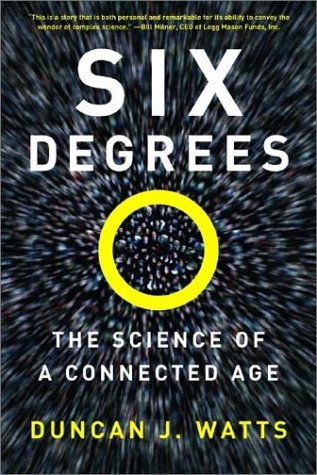 | Another lay introduction, but with more detail and rigor than Nexus,
and was written by a practitioner in the field.
|
- Linked: How Everything Is Connected to Everything Else and What It Means (2003)
by Albert-László Barabási
( www.amazon.com/exec/obidos/ASIN/0452284392/hip-20 )
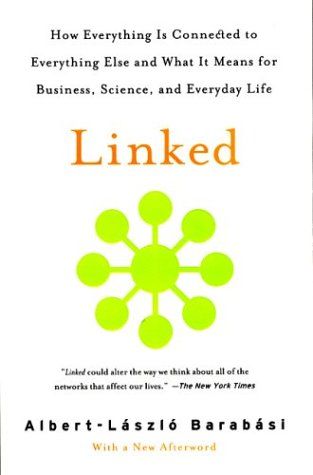 | This lay introduction is also by a practitioner in the field, and gives
even more detail.
|
as well as some rigorous books:
- Excursions In Graph Theory (1980) by Gary Haggart
 | This is where I started last year when I decided to get serious,
but it's really not a good place to start. It's more of a tour
of some advanced theoretical oddities. |
( www.amazon.com/exec/obidos/ASIN/0891010408/hip-20 )
- Pearls in Graph Theory: A Comprehensive Introduction (1990) by Nora Hartsfield and Gerhard Ringel
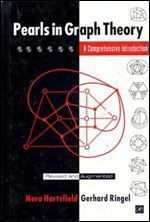 | I got Ringel's book because he taught at UCSC while I was there. It is good
but not great. Sorry for the faint praise, but there are so few books on graph
theory that every good one is worth having.
|
( www.amazon.com/exec/obidos/ASIN/B0087B0FXG/hip-20 )
At this point I would like to add the following popular books:
- Bursts: The Hidden Pattern Behind Everything We Do (2010) by Albert-László Barabási
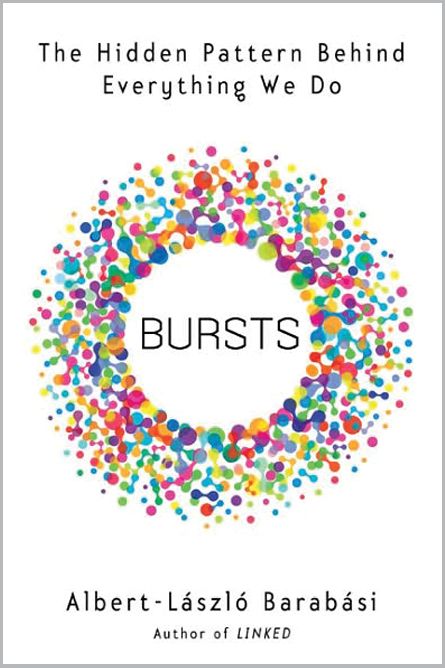 | This book is clearly an attempt at greatness in the popular science writing
genre, and I'm not sure it makes it, but I admire the effort. It does give some
insights on why the dynamics of networks and how they grow sometimes can cause
data streams from those networks to contain clusters or bursts. |
( www.amazon.com/exec/obidos/ASIN/0525951601/hip-20 )
- Connected: The Surprising Power of Our Social Networks and How They Shape Our
Lives — How Your Friends' Friends' Friends Affect Everything You Feel,
Think, and Do (2011) by Nicholas A. Christakis
 | This book is awesome. I read it on paper, and then listened to it read
on CD by the author. Christakis is at the forefront of social network research
today, and explains it well. |
( www.amazon.com/exec/obidos/ASIN/0316036137/hip-20 )
as well as the following rigorous books:
- Introductory Graph Theory (1984) by Gary Chartrand
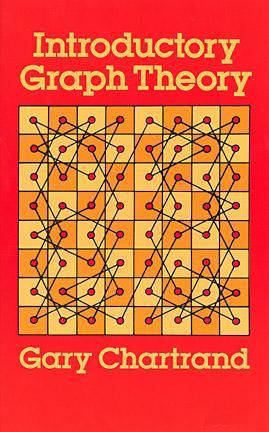 | Okay, I'm gonna nominate this one for the best "first book" on the
mathematics of graph theory. I wish I'd had this text available in college.
|
( www.amazon.com/exec/obidos/ASIN/0486247759/hip-20 )
- Social Network Analysis for Startups (2011) by Maksim Tsvetovat
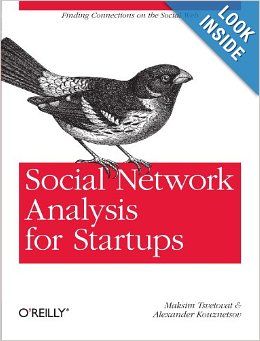 | This book is for computer programmers, uses the Python interactive
computer language, and is light on theory but heavy on examples using real
data. If you have to analyze social network data this book is a necessity.
Both code and data are also available for free download. I began learning
to program in Python (named for the British comedy troupe Monty Python) because
of this book. |
( www.amazon.com/exec/obidos/ASIN/1449306462/hip-20 )
I'm excited about graph theory and its application to social networks for
several reasons:
- The fundamentals of the subject are conceptually simple and visualizable,
and the math requires virtually no prerequisites. For these reasons, like
Boolean Algebra I think it's a great subject to teach to middle schoolers.
- There are more high-quality data sources than ever before in human history,
and the situation improves every day.
- There is more available compute capacity than ever before in human history,
and that situation also improves every day.
- There is currently tremendous focus in both industry and academia
on the topic. Breakthroughs seem to be falling out of trees. And lay interest
is at an all time high due to social networking web sites and apps such as
Facebook, Twitter, LinkedIn, Digg, Foursquare, Tumblr, etc.
There are three areas in which I'd like to report:
- old school sociology
- social data
- math
old school sociology
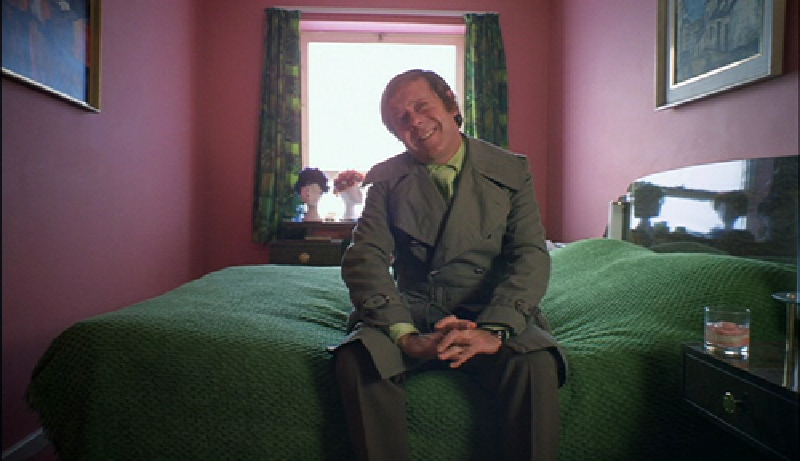 scene from A Clockwork Orange
scene from A Clockwork Orange
"You watch out, little Alex, because next time it's not going to be the
Corrective School anymore. Next time, it's going to be the barry place
and all my work ruined. If you've no respect for your horrible self,
you at least might have some for me who's sweated over you. A big black
mark, I tell you, for every one we don't reclaim. A confession of failure
for every one of you who ends up in the stripey hole."
— Mr. Deltoid, social worker, in A Clockwork Orange (film, 1970)
(
www.amazon.com/exec/obidos/ASIN/B00005ATQB/hip-20 )
The most wide-reaching and informative book in my list above has got to
to be
Connected (2011) by Nicholas A. Christakis. Dr. Christakis seems
to be at the center of both the math and the sociology of the new social network
revolution, directing Human Nature Lab at Harvard University (more on him below),
(
christakis.med.harvard.edu )
and he does a good job of laying the groundwork, explaining the
questions
before exploring possible
answers.
One classic piece of research with a new social network twist that he explains
is the Framingham Heart Study.
(
en.wikipedia.org/wiki/Framingham_Heart_Study )
The study began in 1948 with about five thousand adult subjects from Framingham,
Massachusetts, and has continued for three generations. The amazing new twist
is that recently researches went back to look at the paper records that were
created by the study and found that social network information was inadvertently
included. Because the researchers wanted to track people for decades, they asked
for a list of family and friends that could help find them if they moved and the
study lost contact with them. It turned out many of these people had close
connections
also in the study, and so a part of the social network could
constructed, complete with detailed health information over time. By keying
this information into computers and analyzing it, 21st century network theorists
have discovered in the old Framingham data evidence that
obesity appears
contagious over social networks.
Check out this video, which shows weight gain moving through a network from
node to node:
(
www.youtube.com/watch?v=8aEtyRD1j5U )
Of course, this triggered some firestorms. Objections ranged from "What about
free will?" to "You're demonizing fat people; nobody will want to befriend them."
Perhaps it will clarify the situation to say merely that a pattern has been
observed, but the kind or direction of causality is not established. The best
explanation I've seen of this conundrum is in the essay
Style, Grace and
Information in Primitive Art by Gregory Bateson, reprinted in
Steps
To an Ecology of Mind (1972).
(
www.amazon.com/exec/obidos/ASIN/0226039056/hip-20 )
Bateson suggests "redundancy" is a good word for patterns of unknown causality:
Any aggregate of events or objects (e.g., a sequence of phonemes, a painting, or a
frog, or a culture) shall be said to contain "redundancy" or "pattern" if the aggregate
can be divided in any way by a "slash mark," such that an observer perceiving only
what is on one side of the slash mark can guess, with better than random success,
what is on the other side of the slash mark. We may say that what is on one side of
the slash contains information or has meaning about what is on the other side. Or, in
engineer's language, the aggregate contains "redundancy." Or, again, from the point
of view of a cybernetic observer, the information available on one side of the slash will
restrain (i.e., reduce the probability of) wrong guessing. Examples:
The letter T in a given location in a piece of written English prose proposes that the
next letter is likely to be an H or an R or a vowel. It is possible to make a better than
random guess across a slash which immediately follows the T. English spelling
contains redundancy.
From a part of an English sentence, delimited by a slash, it is possible to guess at the
syntactic structure of the remainder of the sentence.
From a tree visible above ground, it is possible to guess at the existence of roots below
ground. The top provides information about the bottom.
From an arc of a drawn circle, it is possible to guess at the position of other parts of the
circumference...
From how the boss acted yesterday, it may be possible to guess how he will act today.
From what I say, it may be possible to make predictions about how you will answer.
My words contain meaning or information about your reply.
Telegraphist A has a written message on his pad and sends this message over wire to B,
so that B now gets the same sequence of letters on his message pad. This transaction
(or "language game" in Wittgenstein's phrase) has created a redundant universe for an
observer O. If O knows what was on A's pad, he can make a better than random guess
at what is on B's pad.
The essence and raison d'etre of communication is the creation of redundancy,
meaning, pattern, predictability, information, and/or the reduction of the random by
"restraint."
It is, I believe, of prime importance to have a conceptual system which will force us to
see the "message" (e.g., the art object) as both itself internally patterned and
itself a part of a larger patterned universe — the culture or some part of it.
The characteristics of objects of art are believed to be about, or to be partly
derived from, or determined by, other characteristics of cultural and psychological
systems. Our problem might therefore be over simply represented by the diagram:
[Characteristics of art object/Characteristics of rest of culture]
where square brackets enclose the universe of relevance, and where the oblique stroke
represents a slash across which some guessing is possible, in one direction or in both. The
problem, then, is to spell out what sorts of relationships, correspondences, etc., cross or
transcend this oblique stroke.
Consider the case in which I say to you, "It's raining," and you guess that if
you look out the window you will see raindrops. A similar diagram will serve:
[Characteristics of "It's raining"/Perception of raindrops]
Notice, however, that this case is by no means simple. Only if you know the
language and have some trust in my veracity will you be able to make a guess
about the raindrops. In fact, few people in this situation restrain themselves
from seemingly duplicating their information by looking out of the window. We
like to prove that our guesses are right, and that our friends are honest. Still
more important, we like to test or verify the correctness of our view of our
relationship to others. This last point is nontrivial. It illustrates the
necessarily hierarchic structure of all communicational systems: the fact of
conformity or nonconformity (or indeed any other relationship) between parts
of a patterned whole may itself be informative as part of some still larger
whole. The matter may he diagrammed thus:
[("It's raining"/raindrop.)/You–me relationship)]
where redundancy across the slash mark within the smaller universe enclosed in
round brackets proposes (is a message about) a redundancy in the larger universe
enclosed in square brackets.
We have found a redundancy in the Framingham Heart Study data: if we know who has
obese friends at time t1, we can guess they are more likely to become obese
themselves at a later time t2. The causality is, so far, unknown.
But classic sociology has done some great work preparing the way for social
network theory. Just a look through the lifetime accomplishments of social
experimenter Stanley Milgram is an education in the subtleties of "human nature"
of humans acting in networks.
(
en.wikipedia.org/wiki/Stanley_Milgram )
And Dr. Milgram did effectively establish causality, unlike a redundancy in some
stats. He observed people influencing people directly.
One of the big new mysteries in social networks is how people influence. There
is strong data that we are influenced by people 3, but not 4, degrees away in
the network, when we choose what car to buy, how to vote, what to eat, whether
to commit suicide, and other major life decision. Mechanism unknown at this time.
social data
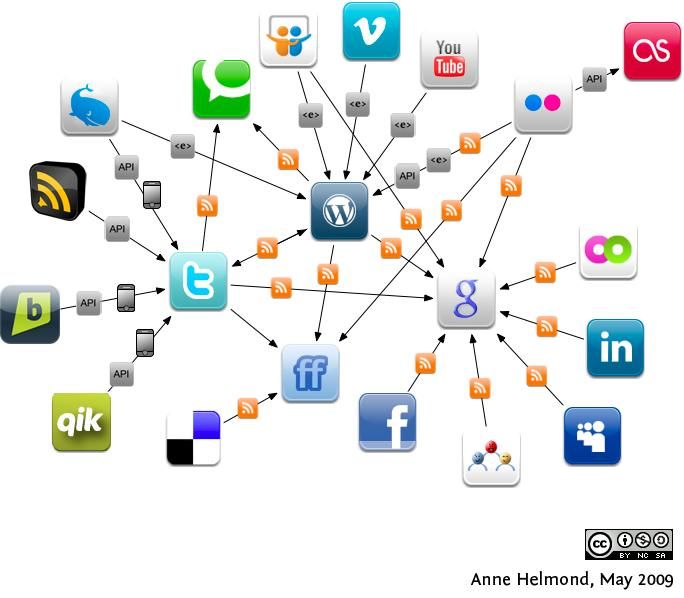 an infographic of social media from kikolani.com
an infographic of social media from kikolani.com
I've told you before about a social networks conference I attended at
Carnegie Mellon University in Pittsburgh, PA., sponsored by the North American
Association for Computational Social and Organizational Science (NAACSOS).
(
www.casos.cs.cmu.edu/naacsos )
I didn't go into detail then, but as far as I could tell the reason the
conference was at CMU was that Dr. Kathleen M. Carley was there with the
Center for Computational Analysis of Social and Organizational Systems (CASOS),
one of the first places in America where you could get a PhD in this stuff.
(
en.wikipedia.org/wiki/Kathleen_Carley )
(
www.casos.cs.cmu.edu )
Since then there have been explosions of growth in academia of interest
in these topics. Of course there is the aforementioned Dr. Nicholas
Christakis of Harvard,
(
christakis.med.harvard.edu )
who founded and runs the Human Nature Lab there.
(
humannaturelab.net )
My friend Philmer sent me a link to a local lecture series at the San Diego
Supercomputer Center (SDSC) associated with the University of California at
San Diego (UCSD), about network/graph theory and social media. The series is
called "UCSD Complex Network Seminar - Different Angles on Network Complexity,
Engineering, and Science (DANCES)."
(
www.caida.org/workshops/dances/ )
One abstract I found fascinating was entitled "Surprise maximization reveals
the community structure of complex networks."
(
www.nature.com/srep/2013/130114/srep01060/full/srep01060.html )
It examines the problem of inferring a "real" community from partial and noisy
data. There is a traditional measure of a "quality of a partition" of a network
into communities, called modularity (Q). This paper proposes:
We recently suggested an alternative global measure of performance, which we
called Surprise. Surprise assumes as a null model that links between nodes
emerge randomly. It then evaluates the departure of the observed partition
from the expected distribution of nodes and links into communities given
that null model. To do so, it uses the following cumulative hypergeometric
distribution:
 formula for calculating surprise maximization
formula for calculating surprise maximization
I have no idea what a "hypergeometric distribution" is but it sounds fascinating.
I mention all this because it shows the level of interest and activity in my
local academic community. I am confident this is going on all over the map.
What will you find if you search
your local academic community?
Meanwhile in the corporate world a similar explosion continues. Facebook has
added an application program interface (API) for bots and other programs to
access their social graph data: the
Graph API.
(
developers.facebook.com/docs/reference/api/ )
The data or just about any page on Facebook, for example my home page,
(
www.facebook.com/alan.b.scrivener )
you just replace the "www" with "graph"
(
graph.facebook.com/alan.b.scrivener )
and the page is displayed in JSON format.
| {
"id": "1653189248",
"name": "Alan B. Scrivener",
"first_name": "Alan",
"middle_name": "B.",
"last_name": "Scrivener",
"link": "https://www.facebook.com/alan.b.scrivener",
"username": "alan.b.scrivener",
"gender": "male",
"locale": "en_US"
}
|
Javascript Object Notation (JSON) is an open-source format that is both
human-readable and machine-readable. (Though I'm not a huge fan of Javascript, I
think JSON is the greatest thing since sliced bread — not as bloated as XML.)
(
en.wikipedia.org/wiki/JSON )
You get whatever data your permissions allow, so it depends on your "friend"
status and the page owner's privacy settings, exactly like with the regular
Facebook pages.
Piggybacking on the Facebook craze, Wolfram Alpha has offered their own layering
of tools on top of the Graph API. If you have a Facebook account you can use free
tools at the Wolfram Alpha web site to analyze your social network.
(
www.wolframalpha.com/facebook )
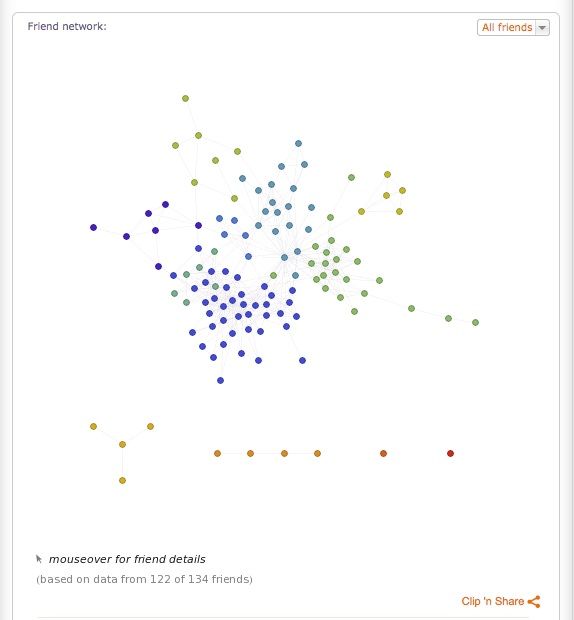 sample Wolfram Alpha social graph analysis (portion)
sample Wolfram Alpha social graph analysis (portion)
While I'm thinking of it, they also have a great little nomenclature for entering
simple graphs in for analysis. For example if you type in:
| 1->2, 2->3, 3->1, 3->4, 4->1
|
(
www.wolframalpha.com/input/?i=
1-%3E2%2C+2-%3E3%2C+3-%3E1%2C+3-%3E4%2C+4-%3E1&
lk=3 )
you get a picture of the graph and quite a bit of analysis.
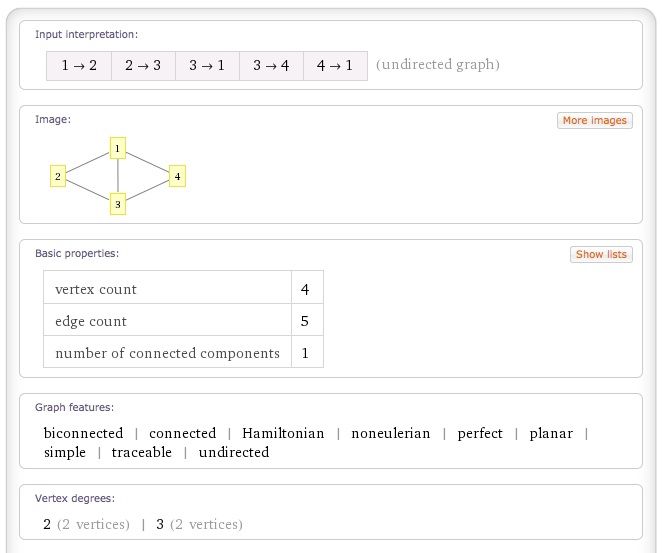 sample Wolfram Alpha graph theory analysis (portion)
sample Wolfram Alpha graph theory analysis (portion)
(I should also mention that the full-up, expensive package
Mathematica
also has extensive algorithms for analyzing graph data.
reference.wolfram.com/mathematica/Combinatorica/guide/GraphAlgorithms.html )
On the high end, I recently found out that the National Security Agency (NSA) of
the United Sates, in its Pyramid system data scooping that has been the topic
of recent scandal, uses a special database optimized for large graphs.
"Neo4j is a robust ... transactional property graph database. Due to its graph
data model, Neo4j is highly agile and blazing fast. For connected data
operations, Neo4j runs a thousand times faster than relational databases."
(
www.neo4j.org )
If you really want some practical experience "where the rubber meets the road,"
writing programs to use mathematical algorithms on real social data, I can't
think of a better plan than to get the above-mentioned book "Social Network
Analysis for Startups" and work with the free programming examples and free
sample data.
(FYI: I found that in getting the Python-based software working on my Mac, I
needed the little web page called "Installing matplotlib in Lion."
the.taoofmac.com/space/blog/2011/07/24/2222 )
For example, this book will show you how to analyze a network, represented
as a matrix of 0s and 1s, to determine the degree of network influence an
individual has. There are four popular metrics of connectedness:
- celebrity — The number of edges connected to a node; number of
"friends" on Facebook; Ashton Kucher's million-pus Twitter followers.
- centrality — For example, if you're part of an ethnic family in
which nearly everyone knows everyone, you have a lot of influence on, and are
influenced by, all of them. Your family as a group may also have "clout" in the
larger society.
- gate-keeper — A node that is the only link, or one of a few,
connecting two sub-networks of high centrality, and becomes a controller of
communication between communities; for example, among nations Russia acts as
a diplomatic channel between enemies Abkhazia and Armenia.
- "the Grey Cardinal" — Sometimes called "the power behind the power,"
individuals with low connectivity but high influence, by being connected to
someone with high connectedness by one of the other three metrics. This is
the hardest to detect, because you need more than the 0s and 1s, you need to
trace the flow of something. A site like Twitter or Tumblr that allows
"re-tweeting" or "re-blogging" provides this, allows us to automatically find
these influencers.
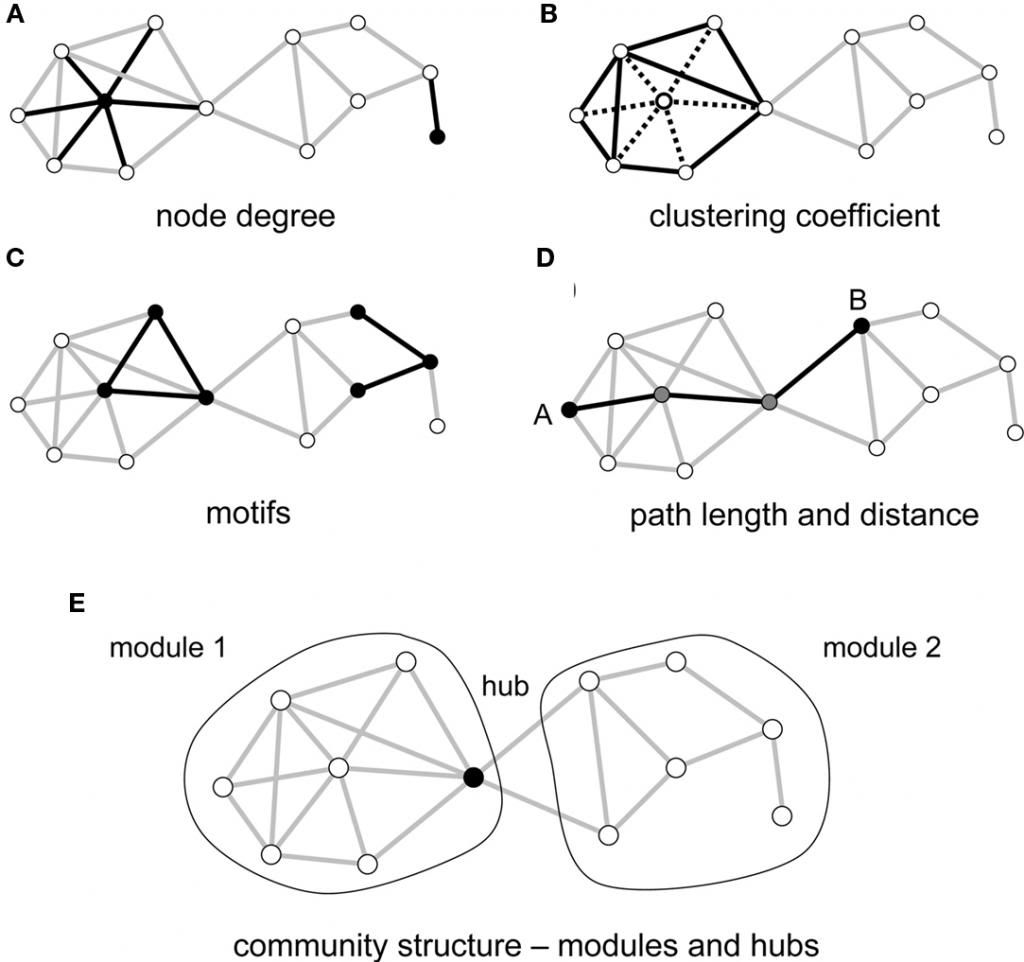 network metrics from http://www.frontiersin.org/computational_
neuroscience/10.3389/fncom.2011.00005/full
network metrics from http://www.frontiersin.org/computational_
neuroscience/10.3389/fncom.2011.00005/full
math
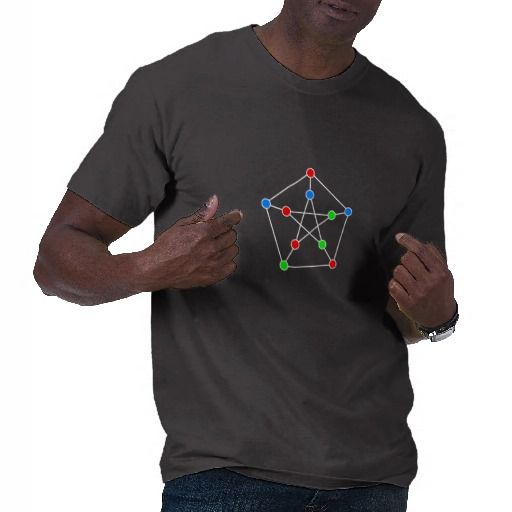 Peterson Graph tee shirt, from
www.zazzle.com/petersen_graph_shirt-235337603224795700
Peterson Graph tee shirt, from
www.zazzle.com/petersen_graph_shirt-235337603224795700
"If numbers aren't beautiful, I don't know what is."
— Paul Erdos, as quoted in My Brain Is
Open: The Mathematical Journeys of Paul Erdos
(1998) by Bruce Schechter
(
www.amazon.com/exec/obidos/ASIN/0684859807/hip-20 )
Here are some useful resources on the web for learning the math. Here are
some great articles:
And there is interactive software to let you
play with the ideas:
So far I have been giving a fairly breezy tour of my graph theory explorations,
but now I'd like to slow down and dig in a little, and talk about applying
Wolfram's method. The ideas are profound, I believe, but the calculations
are easy (at this scale) and can be done with a pen and paper and some simple,
fundamental concepts. What I am interested is the
set of all possible
networks, explored systematically.
(I used a similar methodology in C3M v. 5 n. 2, "Even Better Than the Real Thing,"
in the section on the set of all possible systems, entitled "EXTRA CREDIT."
www.well.com/user/abs/Cyb/archive/c3m_0502.html )
Okay, let's start very simply. The obvious way to go about finding all possible
graphs or networks is to sort them by number of nodes. I've found that thinking
about a network with zero nodes makes my brain hurt, so maybe we'll come back to it.
Consider a network with one node. Since self loops are illegal, there is only
one such graph, with Number of Nodes (NN) equal to 1 and Number of Edges (NE)
equal to zero.
Next consider networks with two nodes. Either they are connected or they are not
(NE=0 or NE=1), so there are two possible graphs.
And if NN=3, NE can be 0, 1, 2 or 3, and there are four possible graphs.
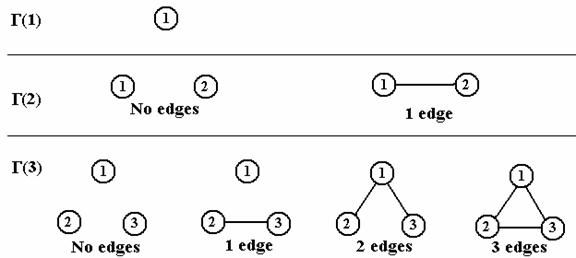 iterating all possible graphs, NN=1,2,3 from
csc.columbusstate.edu/bosworth/Research/Dissertation/C02_N01.htm
iterating all possible graphs, NN=1,2,3 from
csc.columbusstate.edu/bosworth/Research/Dissertation/C02_N01.htm
At this point we've actually already encountered a subtle problem. By way of
example, a graph with three nodes (NN=3) and one edge (NE=1) could have that
one edge in three different places, connecting nodes 1 and 2, 2 and 3, or 1 and 3.
And yet our intuition is that those are "the same graph," since the overall shape
is the same, any any unique property of one (that didn't refer to the node names
in some way) would be a property for all of them.
Next consider all graphs with NN=4.
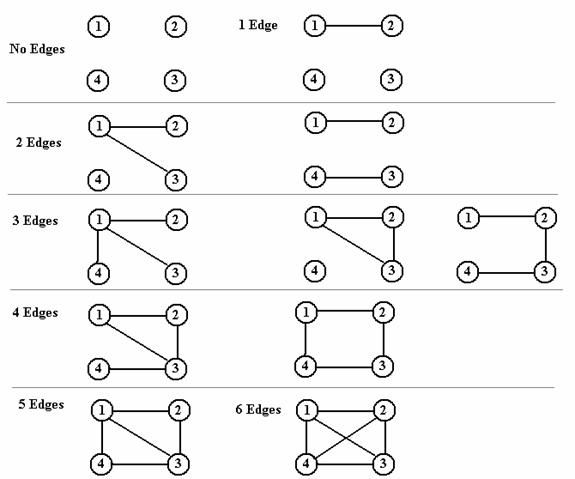 iterating all possible graphs, NN=4 and NE=0,1,2,3,4,5,6 from
csc.columbusstate.edu/bosworth/Research/Dissertation/C02_N01.htm
iterating all possible graphs, NN=4 and NE=0,1,2,3,4,5,6 from
csc.columbusstate.edu/bosworth/Research/Dissertation/C02_N01.htm
If you gaze for a while at the above diagrams, two questions pop up: did we miss
any, and are there any duplicates? It's quite tricky to tell, especially as
the graphs get bigger. This is known as the
graph isomorphism matching
problem.
Notice also that as the Number of Nodes (NN) grows, the Maximum Number
of Edges (MNE) grows much more quickly. It is in fact given by the formula:
MNE = NN * (NN - 1) / 2
which grows almost as fast as NN squared.
But to go at this systematically we need a reproducible method for generating
all graphs of a give size NN — an
algorithm.
To get this done I need to remind you of the standard matrix notation
for a simple undirected graph (no direction arrows, self-loops or parallel paths).
Consider this graph, with nodes A, B, C and D.
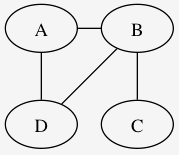 a four-node graph
(image drawn by dot
program from www.graphviz.org)
a four-node graph
(image drawn by dot
program from www.graphviz.org)
You and I can look at the picture and understand it, but a computer cannot.
That's why the graph needs to be expressed as a computer-readable
binary
matrix. The number of direct paths from A to B is in row A column B.
Because there are no parallel paths this is always a zero or one, hence the
"binary." The diagonal from upper left to lower right is all zeros, because
there are no self loops. (Blue background.) And the lack of direction errors
requires that the matrix be symmetric about this same diagonal: if there is a
path from A to B, then there must be a path from B to A (and vise versa). This
is why the gray background triangle and green background triangle are mirror
reflections of each other.
| A | B | C | D |
| A | 0 | 1 | 0 | 1 |
| B | 1 | 0 | 1 | 1 |
| C | 0 | 1 | 0 | 0 |
| D | 1 | 1 | 0 | 0 |
So this matrix contains so much redundancy that we can throw away everything
but the gray background triangle and still retain all of the information.
Here I've reproduced just that triangle, showing how it has three rows of
lengths three (orange), two (red), and one digit (purple), and how I can
combine them into a single six digit number.
Now, to get all possible networks with NN=4 I can cycle through all possible
combinations of six binary digits (0 or 1), which is the first 2^6 (64) binary
numbers, or what we in base 10 call zero through sixty-three.
000000
000001
000010
000011
000100
000101
000110
000111
001000
001001
001010
001011
. . .
and so on. If this is gibberish to you, take a side trip to the Wikipedia article
on
Binary Number.
(
en.wikipedia.org/wiki/Binary_number )
If you have a modern Mac or other UNIX system you can use the
bc basic
calculator program in a shell to convert binary (base two) to decimal (base
ten). Red is the part that you type. Once you set the input base (ibase)
to 2, you can type base 2 numbers and they will be echoed in base 10.
# bc
bc 1.06
Copyright 1991-1994, 1997, 1998, 2000 Free Software Foundation, Inc.
This is free software with ABSOLUTELY NO WARRANTY.
For details type `warranty'.
ibase=2
101
5
Okay, programmers, sorry for the side trip. Back to the problem at hand.
Now we have a way to generate all of the graphs for a given size of NN,
but how do we eliminate duplicates? We are back to the graph isomorphism
matching problem.
One way to help is to come up with various analytics of graphs. In addition
to the Number of Edges (NE), we can compute the density (NE/MNE). We can
count how many unconnected "islands" there are. We can count the number of
edges connected to each node, and produce a sorted list. Each of these metrics
can be used to prove that two graphs are non-isomorphic or different,
but not that they are isomorphic or the same.
Another useful technique is come up with names for some of the more common
patterns. Graph theorists have been doing this for a while and have assigned
single letters to various well-known graph families. For example:
I won't explain them all here; the names are mostly obvious and you can refer to
their Wikipedia articles for details.
Using the above info, I have generated, by hand, this table of the
the set of all graphs of sizes NN=1,2,3,4 with additional data.
g1-4_table_WHITE_TEXT.html
Each size NN has Tr(NN - 1)^2 entries, where Tr(n) is the Triangular
Number of size n, which gives the size we need for the triangular matrix.
( en.wikipedia.org/wiki/Triangle_number )
I have come with a numbering scheme for the graphs, and give the matrix for
each one, have a picture drawn again by dot (see above), and some
nicknames for the graph, both my own and the mathematicians'. Lastly I show a
blue flag if this is the first entry of the graph in the table, or grey if it
is a duplicate, and I give the id number of the first graph it matches.
Below is a table with the duplicates removed, which reduces the 64 graphs to 11
unique forms.
g4_table_BLACK_TEXT.html
So, it may be fair to ask: what's the point of all this? Wolfram argued
that if we methodically begin looking at all possible examples of a mathematical
strucure (of course we can't see them all and have to stop sometime), by
visualizing them in some standard manner, it would increase our intuition and lead
to breakthroughs. I feel like I have really gotten to know the 11 unique
relationships 4 people can have just by each couple being friends or not.
I also think I'm beginning to appreciate how large networks get so complicated,
though I can't quite put it into words yet.
So far I have done this by hand, mostly by visual inspection. What Im doing here
can be done by computers, of course. The networks don't have to be very big
before the humans are overwhelmed and the machines must take over.
A software package called nauty has been released which helps
automate what I'm doing, which is of course the above-mentioned graph
isomorphism matching.
( ww.cs.sunysb.edu/~algorith/implement/nauty/implement.shtm )
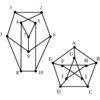 nauty finds two matching graphs
But something quite amazing is that it isn't very long before the machines
are overwhelmed too. In the final analysis the matching sometimes has to be
done "the hard way," which involved re-ordering all of the nodes in a matrix,
which takes NN! (Number of Nodes factorial) steps, and at each step comparing
two matrices.
( en.wikipedia.org/wiki/Factorial )
This explodes pretty fast. Yet the Mathematica package does have a function
in its Combinatorica package called NumberOfGraphs[n], which gives "the
number of nonisomorphic simple graphs on n nodes" and I reproduce some values
below.
reference.wolfram.com/mathematica/Combinatorica/tutorial/Combinatorica.html
reference.wolfram.com/mathematica/Combinatorica/ref/NumberOfGraphs.html
nauty finds two matching graphs
But something quite amazing is that it isn't very long before the machines
are overwhelmed too. In the final analysis the matching sometimes has to be
done "the hard way," which involved re-ordering all of the nodes in a matrix,
which takes NN! (Number of Nodes factorial) steps, and at each step comparing
two matrices.
( en.wikipedia.org/wiki/Factorial )
This explodes pretty fast. Yet the Mathematica package does have a function
in its Combinatorica package called NumberOfGraphs[n], which gives "the
number of nonisomorphic simple graphs on n nodes" and I reproduce some values
below.
reference.wolfram.com/mathematica/Combinatorica/tutorial/Combinatorica.html
reference.wolfram.com/mathematica/Combinatorica/ref/NumberOfGraphs.html
| n | NumberOfGraphs[n] | Tr[n - 1] = (n^2 - n)/2 | 2^Tr[n - 1] |
| 0 | 1 | 0 | 1 |
| 1 | 1 | 0 | 0 |
| 2 | 2 | 1 | 2 |
| 3 | 4 | 3 | 8 |
| 4 | 11 | 6 | 64 |
| 5 | 34 | 10 | 1,024 |
| 6 | 156 | 15 | 32,768 |
| 7 | 1,044 | 21 | 2,097,152 |
| 8 | 12,346 | 28 | 268,435,456 |
| 9 | 274,668 | 36 | 68,719,476,736 |
| 10 | 12,005,168 | 45 | 35,184,372,088,832 |
| 11 | 1,018,997,864 | 55 | 36,028,797,018,963,968 |
| 12 | 165,091,172,592 | 66 | 73,786,976,294,838,206,464 |
| 13 | 50,502,031,367,952 | 78 | 302,231,454,903,657,293,676,544 |
For comparison I give the triangle number for each n - 1, and 2 to that power,
so you can see how quickly the number of non-isomorphic graphs deviates from
the total number of graphs.
This is still classified as a "hard problem" in math. I suspect Mathematica
has it values for the NumberOfGraphs function precomputed in some table.
I said above that I might return to graphs with zero nodes, but I've changed
my mind. It's the "null graph" and it's navel-gazing. What I encourage you
to do is to look at the set of all unique graphs with NN=5 and NN=6; there
are 34 and 156 of them respectively. See if you can get to know them on a
personal level. Give them nicknames. Wolfram would be proud.
Feature:
"If It's Just a Virtual Actor,
Then Why Am I Feeling Real Emotions?"
(Part Five)
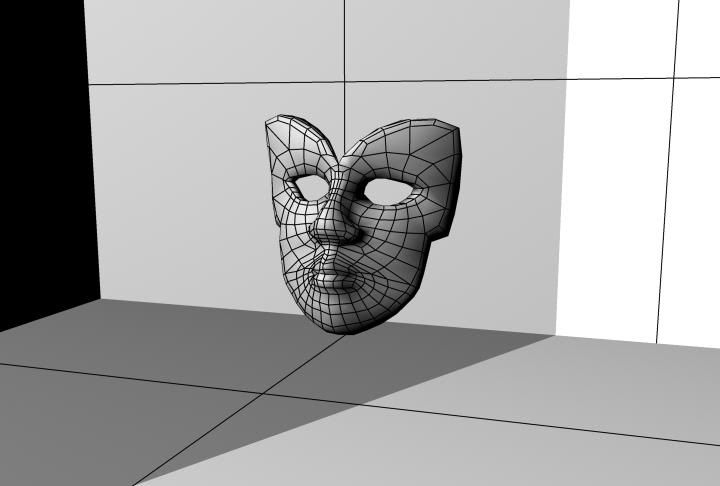 (If you haven't read parts one through four, see the archives, listed at the end.)
(If you haven't read parts one through four, see the archives, listed at the end.)
ARTIFICIAL CELEBRITIES
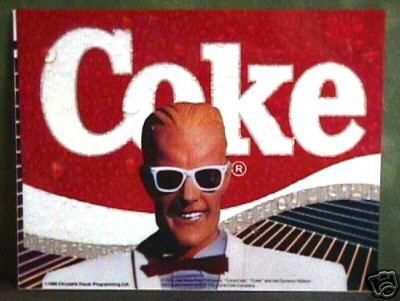 synthespian Max Headroom does a celebrity endorsement
synthespian Max Headroom does a celebrity endorsement
"I think I'd probably tell you that it's easier to desire and pursue the attention
of tens of millions of total strangers than it is to accept the love and loyalty of
the people closest to us."
— William Gibson, 1996
Idoru [Japanese pronunciation of "idol"]
( www.amazon.com/exec/obidos/ASIN/0425158640/hip-20 )
William Gibson didn't drop "Idoru," his science fiction novel about a rock star
marrying an artificial personality, until 1996. But there was something in the
zeitgeist by the early nineties that seemed to encourage some people to
think that computer graphics and virtual reality would somehow help us solve
"hard" problems in Artificial Intelligence (AI). When I used to hang out with
my friend Kim Levitt in Hollywood, before he died of AIDS in 1991, we watched
a lot of episodes of the ABC television show "Max Headroom" (1987).
( www.amazon.com/exec/obidos/ASIN/B00005JNU5/hip-20 )
I remember one episode that was quite relevant to the concept of "virtual
actors." It was entitled "Deities" and aired 25 September 1987. Here is
the "blurb" on it from Wikipedia:
"The leader of the View-Age church, who happens to be Carter's ex-girlfriend,
kidnaps Max from Network 23 and threatens to erase him to prevent Carter from
running a story exposing the church's claim of saving its parishioners' minds
as AI constructs as false."
Kim and I agreed on the spot that saving someone's mind in a computer was a
flat-out impossibility with current technology. (That's probably because we
both programmed computers.)
The freaky thing was that we knew other people who believed it was possible.
This kind of creeped me out, reminding me of the dollmakers in Japan who would
recreate a child that had died, even using their hair, for bereaved parents
and grandparents.
Sure, there were legitimate activities going. As I've mentioned previously,
Steve Tice's company SimGraphics had coined the term VActorTM
(Virtual Actor) as a trademark for their performance cartoon company. A few
years later, after a frustrating VR game project with Hasbro that didn't come
to fruition, Tice met a frozen foods magnate (who my buddies that knew him from
Rockwell called the "refrigerator magnet"), and was funded for a project
to create computer graphics of dead celebrities for entertainment purposes.
If memory serves it was called Virtual Celebrity Productions, a division
of Global Icons. The movie "Forrest Gump" (1994) was already in production,
and there was a lot excitement in the Los Angeles VFX community about 2D
video effects for modifying classic footage, etc.
Meanwhile, Greg panos had also left Rockwell, and hustler that he is (I mean
that in a good way) he was handing out ball caps at one point that said
"1-900-VIRTUAL" which you call for a per-minute fee to get the latest news
and gossip on Virtual Reality. He gave me a free sample call, and the one
I heard was about the brand of VR headsets used in the video "Even Better
Than the Real Thing" by U2.
Shortly afterwards Greg got involved with being an evangelist of sorts for
3D scanning and motion capture, and formed the Personaform company to
encourage self-scanning by the public and especially persons of note.
He recently dredged up and posted a video about it.
( http://www.youtube.com/watch?v=ewBkIZFDruE&feature=share )
His "hype" talked about this new technology offering a form of immortality.
But I had another friend, who shall remain nameless, who was diagnosed with
HIV around this time, and he was very unwilling to die. He began to talk
as though he believed that a digital copy of his shape would actually
be him, and offer true immortality. (Of course he was not a programmer.)
The bad news is that this is pure fantasy. The good news is
that, in 2013, he is still alive, an HIV survivor saved not by computer
graphics but by pharmacology.
ONCE MORE INTO THE CLUB
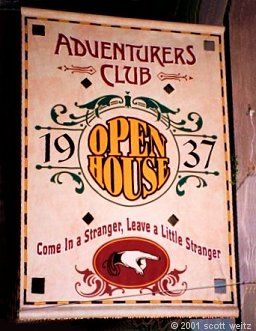 banner outside Adventurers Club
(photo from etixland
www.etixland.com/ADVCLUB/ACMain/ACmain.htm)
banner outside Adventurers Club
(photo from etixland
www.etixland.com/ADVCLUB/ACMain/ACmain.htm)
"...the real action at Gatorland, the event that brings even the alligators
to life, is the Assault on the Dead Chickens, which is technically known as
the Gator Jumparoo. I am ... not making this up."
— Dave Barry, 1991
"Dave Barry's Only Travel Guide You'll Ever Need"
( www.amazon.com/exec/obidos/ASIN/0345431138/hip-20 )
In May of 1993 the company I was working for, Advanced Visual Systems (AVS)
held their annual user group meeting at the Dolphin Hotel at Walt Disney World
in Florida. The attendees were all doing scientific visualization, and the
theme was "The Magic of Science." I really wanted to be there. I prepared
a talk called "The Nature of Scientific Visualization," and got it accepted.
This turned out to be a great strategic move, because at the last minute budgets
were cut and many of my co-workers didn't get to go, but they sent me to deliver
my talk.
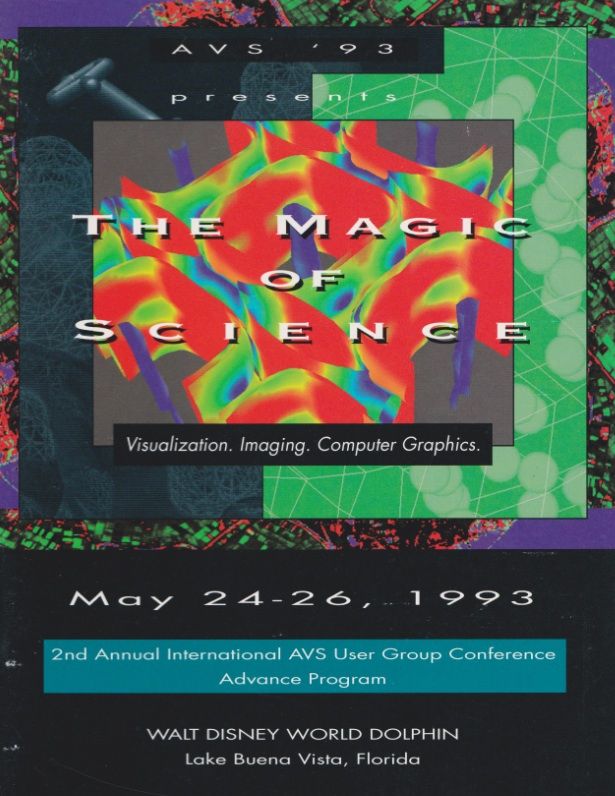 cover of Advance Program for AVS '93 User Group
cover of Advance Program for AVS '93 User Group
My friend Steve P. and his wife Jan were also attending -- I think he was
presenting about their pressure data from wheelchairs as a tool for treating
and preventing chair-sores, what we called the "Buttprint Visualization."
The Dolphin Hotel was a freaky place to stay. The lobby was like the inside
of a gargantuan Victorian beach tent, with 5-fold symmetry that seemed 4-fold,
making it very easy to get lost. Post-Modern prankster Michael Graves designed
it. The hallway walls and floors had crayon doodles of beach stuff: starfish,
buckets and shovels, sand dollars, towels... A video looping in the rooms
had a 9-year-old boy claiming to have designed the hotel. At one point I
freaked out and had to go to Walgreen's in Kissimmee, where the aisles are at
90 degrees and the lighting was fluorescent white, just to get some normalcy.
( https://www.google.com/search?safe=off&hl=en&site=imghp&tbm=isch&source=hp&biw=913&bih=680&q=michael+graves+dolphin&oq=michael+graves+dolphin&gs_l=img.3..0i24.1259.5729.0.6072.22.12.0.10.10.0.147.1061.9j3.12.0...0.0...1ac.1.9.img.e36qQVgeIy4 )
But most of the time we embraced the weirdness. Perhaps because of the proximity
of the Adventurers Club, even the waiters in the lobby bar seemed like drama
geeks, doing goofy improv as he took my order for smoked alligator meat sausage
appetizers. (In retrospect not such a good idea, the gator.) And speaking
of gators, as I always seemed to during those days, I made a mix tape for
my Florida trip. I called it "Gator Jump-A-Roo" after the Dave Barry anecdote
(above), and on the cover I put a picture of the Mardi Gras pool at one of
the New Orleans themed Disney hotels.
 pool at Port Orleans French Quarter Hotel,
Walt Disney World, Orlando; pic from AllEars.net
land.allears.net/blogs/guestblog/2008/04/
pool at Port Orleans French Quarter Hotel,
Walt Disney World, Orlando; pic from AllEars.net
land.allears.net/blogs/guestblog/2008/04/
walt_disney_world_as_a_teen_pa_6.html
The eclectic blend of music included the "Exotica" faux-tropical stylings
of Los Angeles-based Martin Denny, such as his jolly "Jungle River Boat."
( www.youtube.com/watch?v=8IuqsB29jR8 )
My wife and I sat around in Steve and Jan's hotel room while Steve worked on
his presentation, and I brought a boom box playing the "Gator Jump-A-Roo"
mix tape. Eventually I dragged my wife off to see the Adventurers Club, which
I'd been ranting about for about three years now. Jan wanted to stay, but then
after we left she changed her mind and tried to meet up with us to no avail,
and ended up back at the gator appetizer place drinking alone. Steve left the
audio tape (running time approx. 90 minutes) on auto-repeat until about two
repetitions, and then turned it off.
Meanwhile, I got to show my significant other "the club." It was better than
I remembered. She loved it. We had a wonderful time, and the next night we
managed to get Steve and Jan there too.
As before, the scripted stuff was great: the Mask Room, the Treasure Room,
the New Member Induction Ceremony in the Main Salon, the shows in the Library,
such as the Balderdash Cup, the Maid's Cabaret, and the Radiothon. All this
stuff is documented on the web by fanboys and girls, and some of it is on
YouTube. But the real magic of the club was the unexpected, real-time improv
with the unwitting cooperation (or sometimes witting) of the guests.
Once, a character of a gypsy woman, the rarely-seen Madame Zarkov, was climbing
around at the base of the statue of "Zeus Goes Fishing" when she broke a glass,
and a guest cut herself on the broken glass. Another character named Pamelia
Perkins, the club president, appeared and, entirely in character, had the
guest fill out an accident report after offering her a bandaid. I was later
able to confirm that the actress playing Pamelia thought the actress playing
Zarkov had screwed up royally (as did I), but none of this was said overtly
at the time. What was overt was that the whole routine was hilarious to
observe, at least to me. Over time we got to see these characters as familiar
friends, even though different performers played the parts on different nights.
(Wikipedia has a good summary of the club's characters.)
( http://en.wikipedia.org/wiki/Adventurers_Club )
Of course I was there to work and during the day I did. I helped man a booth
at the user conference, and at the appointed time (10-10:45 AM 25 May 1993)
I delivered my talk, "The Nature of Scientific Visualization." I was nervous
because I had to compete with some other talks that sounded interesting, including:
- Applications of AVS in Earth Sciences at Oxford
- MAPLES and AVS
( en.wikipedia.org/wiki/Maple_(software) )
- The Practical Use of AVS to Aid the Visualization of 3-D Semiconductor Device Simulation
- Parallel Processing Support for GIS
( en.wikipedia.org/wiki/GIS )
- The Weather on Jupiter
- Visualization of Airflow of a Rat's Nasal Airway...
but in fact my talk was standing room only. One day I plan to post a
transcription of it.
 AVS93 program page 6
AVS93 program page 6
A RAINY NIGHT IN FLORIDA
 view of Shark Reef at Typhoon Lagoon from
http://www.ourlaughingplace.com/asp/
attraction.aspx?attractionID=SR#.UWhUOIKF43A
view of Shark Reef at Typhoon Lagoon from
http://www.ourlaughingplace.com/asp/
attraction.aspx?attractionID=SR#.UWhUOIKF43A
"Ahmet Ertegun used this towel as a bathmat six weeks ago at a
rancid motel in Orlando, Florida, with the highest mildew rating
of any commercial lodging facility within the territorial limits
of the United States, naturally excluding tropical possessions
. . . It's still damp. What an aroma!"
— Frank Zappa, 1971, "Im Stealing the Towels"
from 200 Motels (soundtrack album)
( www.amazon.com/exec/obidos/ASIN/B0000009SB/hip-20 )
Pardon me if I digress, but I'm remembering a series of strange dreams I had
in the 1980s, of traveling to Disney World with friends and trying to get them
to stay up on old Orange Blossom Trail, but then finding we had to travel by
canal to get there, and my friends refusing to ride in the canal boats.
This was before I found out that OBT was (and is) where the prostitutes and
drug dealers are most likely to be found, which became apparent in 1990 when I
stayed in an old motel surrounded by both, and swore I would never return to it.
So in May 1993 when the AVS user conference ended, I took my pregnant wife
(did I mention she was 5 months pregnant?) to a water park, "Typhoon Lagoon,"
before we planned to drive to the space coast (Florida Atlantic) for one day
and then fly back to California.
Typhoon Lagoon was themed like a tropic port that had been ravaged by
winds and waves, and I always find it to be utterly charming. We discovered
in on our 1989 trip when our friend Bob said he couldn't ride any more "boats
past dolls" (such as EPCOT's "River of Time" in the Mexico pavilion), and
we ended up paddling inner tubes around the "infinite river" at Typhoon Lagoon,
which they call "Castaway Creek." It turns out being able to steer is a good
antidote to theme park burn-out.
Then in the afternoon it began to pour rain. Our first thought was "we're
already wet; we'll just stay in the water." But as we've learned many times
before, it isn't the rain, it's the lightning that's a hazard in Central
Florida. We were ordered out of the water, and found ourselves in a very
long line to get towels and retrieve our dry clothes from our locker. To
stall for time we ducked into the shark aquarium, themed to look like a
capsized boat (see photo above). Inside we were out of the rain, and the
splashing raindrops looked cool looking up from below at the surface of the
water, but we began to shiver even in the Florida heat. FInally we got our
towels and clothes, and bought more dry clothes in a gift shop, and made our
way to the rental car, where we sat sopping trying to towel off and change.
That's where my pregnant wife said, "I think I'm catching a cold." I realized
I needed to bail on the plan to drive an hour east, and get her right into
a bed.
As fate would have it, this visit was winding down at an interesting annual
cusp in time. Mid-May is a rather slow time at Walt Disney World, until
you reach Memorial Day Weekend, when the summer season kicks off with one of
the busiest weekends of the year. We were right on that divide, and the room
we'd just checked out of was booked solid. I know, I called. Everywhere I
called was booked solid. Finally I remembered that skuzzy motel on Orange
Blossom Trail where we'd stayed in '90 and I'd returned in '91. They had
a room. When we got there the some of the stairs were collapsed, the ceiling
tiles were caved in, the bed had a spring sticking up and there was moss
growing in the shower. But the sheets were clean and the plumbing worked.
I tucked my sick wife in and went out for a drive in the rain, returning
some hours later (giving her time to sleep) with some kind of health-looking
take-out. After I woke her up and fed her, I asked if she wanted to go
back to sleep until the flight out in the morning. No, she told me, she was
feeling better, and she wanted to go back one more time to the Adventurers
Club.
And so we found ourselves waiting outside of the club in the rain. It normally
opened at 7:30 PM (as I recall) but it was after 9:00 and still closed.
Finally the staff let us in. Soon we found our favorite actress, playing
Ginger Vitus the maid, and she was doing a slow burn. She told us there'd
been a couple of inches if water on the floor of the main salon, due to
leaking rain, and most of the actors and staff thought they shouldn't have
opened at all that night, but management just wanted to make money (the bar
being a big cash cow) and so they had it pumped out and fan-dried in a hurry.
The fans were still running in the corridor leading to the restrooms.
As irate as she was about the situation, she was very friendly to us, and
we bonded a bit in the adversity. We began to "penetrate the veil" a
little. When she wandered off with her feather duster to work the room,
my wife and I conferred, and decided to invite her to brunch the next day.
When we walked back up to her and I popped the question, she gave us a "deer in
the headlights" look, and I wondered how many other such invitations she had
refused over the course of playing adventurers.
"Tell her why," my wife suggested. Improvising, I said, "Because we think
this club represents a brand new form of interactive entertainment, and we're
fascinated and want to learn more." With some hesitancy, she said yes!
I reflect sometimes on the number of turns of fate that could've gone
differently that lead up to us making this appointment.
BRUNCH WITH AN ADVENTURER
 Google satellite view of Cross Roads Shopping Center,
12549 County Road 535, Orlando, FL 32836
Google satellite view of Cross Roads Shopping Center,
12549 County Road 535, Orlando, FL 32836
"Why did directing this play appeal to you?
I like puzzles. I'm not really a conspiracy geek, but I like puzzles and I
like mysteries. There's a lot of trying to determine what is real and what
is not. You don't know all the answers at the end."
— Anne Hering, interviewed October 2009
( http://blogs.orlandosentinel.com/entertainment_stage_theat/2009/10/30-seconds-with-anne-hering.html )
We met for brunch at a reasonable hour the next day. It was somewhere in a
shopping center called Crossroads Center (aerial photo above), as I definitely
remember buying my still-sick pregnant wife some vitamin C at the Goody's
Supermarket in the same complex. The restaurant might have been "Perkin's"
which would actually been an interesting connection, since the woman we were
meeting often played Pamelia Perkins, Adventurers Club President.
( en.wikipedia.org/wiki/Adventurers_Club#Characters )
( advclub.wikia.com/wiki/Cast_of_Characters )
In addition to Ginger the maid, we had also seen her Samantha Sterling, and
before that I'd seen her as Mandora. But at this point we still didn't know
her real name. She introduced herself as Anne Hering. (A year later I would
tell her I remembered a Monty Python routine about an 'alibut, but never an
'herring. She pointed out that it was a very old routine, and I was showing
my age.) Out of character and in person she reminded me a bit of Anne Francis,
very witty and expressive and obviously talented.
 Anne Hering as Mandora, in the
Adventurers Club Mask Room
Anne Hering as Mandora, in the
Adventurers Club Mask Room
Over brunch she was kind enough to regale us with tales of the club. She kept
insisting she was the wrong person for this though. "You need to meet Kris,"
she kept saying.
She said she was involved in a number of acting projects in central Florida,
and arranged to only work part time at the club so she could go to auditions,
rehearsals, and performances for these other projects. Kris was full time,
and had been there from the beginning.
We told her that there was something very special about the Adventurers Club,
like nothing we'd ever experienced before. She said that one was reason was
that the Imagineers who designed the place insisted that Disney employ actors
in the union, the Actors' Equity Association.
( www.actorsequity.org )
Some of the shows at Walt Disney World were staffed by people who just
wandered in and applied at the Casting Center, but the song and dance numbers
tended to be equity folk with real training and talent. It made sense to me;
most of the Adventurers had uncanny talents of improvisation and — yes,
I'll say it — crowd control.
Anne again alluded her annoyance with how management saw the club as an
alcohol cash cow, and how finessing the drunks was a challenging part of the job.
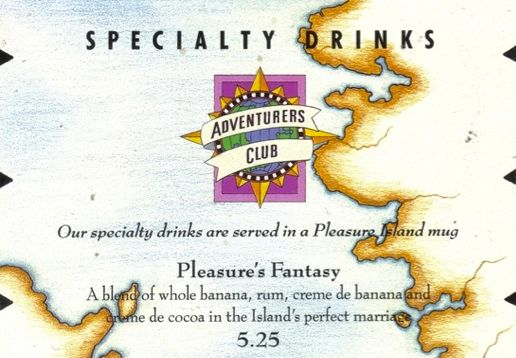 a portion of a drink menu
at the Adventurers Club
a portion of a drink menu
at the Adventurers Club
I was able to compare notes with her about the incident of the actress playing the
gypsy who broke the glass that cut a guest. Anne wasn't very fond of her,
because of some unprofessional incidents like this.
On a hunch I asked if there were "groupies," people who became overly attached
to the cast. Yes, of course, she confirmed. (I realized that a challenge
to getting this brunch date was to not look like one of them!) But also,
unexpectedly, she told us there were Disney cast groupies, i.e., members of the
the Walt Disney World "cast" (all employees there were called cast members —
it's a show!) who used their employee discounts to attend the Adventurer's Club
all the time. Some of them were as troublesome as the other groupies. Amazing.
She kept reiterating "you need to meet Kris." I finally asked who she meant.
Kristian Truelsen, she explained, was an original cast member from the club
(unlike Anne), still working full-time (unlike Anne), who was obsessively devoted
to the mythology and backstory (also unlike Anne I presumed), as well as the
artistry of impromptu theater (a passion which Anne did share).
( www.kristiantruelsen.com )
Kris was also keeper of "the book," a guide to all of the artifacts in the club,
begun by imagineers but maintained by cast members, which fanciful backstories
for each zebra cabinet and poison dart. She also mentioned that the main
Imagineer behind the club was Joe Rohde, and we might seek him out for information.
(She revealed that his picture was hidden in the Adventurer's Club library
somewhere.)
We told her we thought the club represented a new and unique form of entertainment
and that we really appreciated her talents as an interactive actor. She told us
that she hadn't appreciated this until one night at the club she had gone in
to work in a poor mood, having just experienced a disappointment in her love life.
She met an old lady from Eastern Europe who looked like the trope of the wise
old crone, with a scarf over her head and everything, who told Anne that she
didn't realize how important her work was, and how many people it touched.
She took it to heart, and looked at it as a nobler calling since.
Too soon the magical time was over. Lastly we exchanged mailing addresses
for further communication.
TO BE CONTINUED...
========================================================================
newsletter archives:
www.well.com/user/abs/Cyb/archive
========================================================================
Privacy Promise: Your email address will never be sold or given to
others. You will receive only the e-Zine C3M from me, Alan Scrivener,
at most once per month. It may contain commercial offers from me.
To cancel the e-Zine send the subject line "unsubscribe" to me.
~~~~~~~~~~~~~~~~~~~~~~~~~~~~~~~~~~~~~~~~~~~~~~~~~~~~~~~~~~~~~~~~~~~~~~~~
I receive a commission on everything you purchase from Amazon.com after
following one of my links, which helps to support my research.
========================================================================
Copyright 2013 by Alan B. Scrivener
Last update:
Mon Dec 30 18:43:48 PST 2013
screen shots from TED Talk "Nicholas Christakis: How social networks predict epidemics" http://www.ted.com/talks/nicholas_christakis_
 Robert Downy, Jr., Chris Evans, Mark Ruffalo, Jeremy
Renner, and Samuel Jackson at the Oscars, 24 Feb. 2013
www.gq.com/style/blogs/the-gq-eye/2013/02/gq-addresses-the-avengers-men-at-the-oscars.html
Robert Downy, Jr., Chris Evans, Mark Ruffalo, Jeremy
Renner, and Samuel Jackson at the Oscars, 24 Feb. 2013
www.gq.com/style/blogs/the-gq-eye/2013/02/gq-addresses-the-avengers-men-at-the-oscars.html
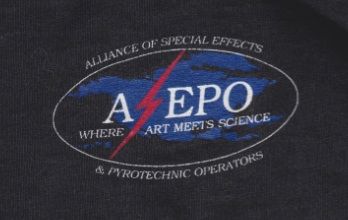 tee shirt from ASEPO fundraiser
www.asepo.org
tee shirt from ASEPO fundraiser
www.asepo.org
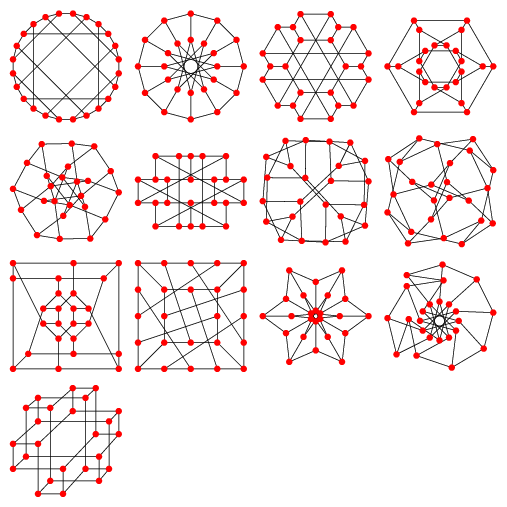









 scene from A Clockwork Orange
scene from A Clockwork Orange
 an infographic of social media from kikolani.com
I've told you before about a social networks conference I attended at
Carnegie Mellon University in Pittsburgh, PA., sponsored by the North American
Association for Computational Social and Organizational Science (NAACSOS).
( www.casos.cs.cmu.edu/naacsos )
I didn't go into detail then, but as far as I could tell the reason the
conference was at CMU was that Dr. Kathleen M. Carley was there with the
Center for Computational Analysis of Social and Organizational Systems (CASOS),
one of the first places in America where you could get a PhD in this stuff.
( en.wikipedia.org/wiki/Kathleen_Carley )
( www.casos.cs.cmu.edu )
Since then there have been explosions of growth in academia of interest
in these topics. Of course there is the aforementioned Dr. Nicholas
Christakis of Harvard,
( christakis.med.harvard.edu )
who founded and runs the Human Nature Lab there.
( humannaturelab.net )
My friend Philmer sent me a link to a local lecture series at the San Diego
Supercomputer Center (SDSC) associated with the University of California at
San Diego (UCSD), about network/graph theory and social media. The series is
called "UCSD Complex Network Seminar - Different Angles on Network Complexity,
Engineering, and Science (DANCES)."
( www.caida.org/workshops/dances/ )
One abstract I found fascinating was entitled "Surprise maximization reveals
the community structure of complex networks."
( www.nature.com/srep/2013/130114/srep01060/full/srep01060.html )
It examines the problem of inferring a "real" community from partial and noisy
data. There is a traditional measure of a "quality of a partition" of a network
into communities, called modularity (Q). This paper proposes:
an infographic of social media from kikolani.com
I've told you before about a social networks conference I attended at
Carnegie Mellon University in Pittsburgh, PA., sponsored by the North American
Association for Computational Social and Organizational Science (NAACSOS).
( www.casos.cs.cmu.edu/naacsos )
I didn't go into detail then, but as far as I could tell the reason the
conference was at CMU was that Dr. Kathleen M. Carley was there with the
Center for Computational Analysis of Social and Organizational Systems (CASOS),
one of the first places in America where you could get a PhD in this stuff.
( en.wikipedia.org/wiki/Kathleen_Carley )
( www.casos.cs.cmu.edu )
Since then there have been explosions of growth in academia of interest
in these topics. Of course there is the aforementioned Dr. Nicholas
Christakis of Harvard,
( christakis.med.harvard.edu )
who founded and runs the Human Nature Lab there.
( humannaturelab.net )
My friend Philmer sent me a link to a local lecture series at the San Diego
Supercomputer Center (SDSC) associated with the University of California at
San Diego (UCSD), about network/graph theory and social media. The series is
called "UCSD Complex Network Seminar - Different Angles on Network Complexity,
Engineering, and Science (DANCES)."
( www.caida.org/workshops/dances/ )
One abstract I found fascinating was entitled "Surprise maximization reveals
the community structure of complex networks."
( www.nature.com/srep/2013/130114/srep01060/full/srep01060.html )
It examines the problem of inferring a "real" community from partial and noisy
data. There is a traditional measure of a "quality of a partition" of a network
into communities, called modularity (Q). This paper proposes:
 formula for calculating surprise maximization
formula for calculating surprise maximization
 sample Wolfram Alpha social graph analysis (portion)
While I'm thinking of it, they also have a great little nomenclature for entering
simple graphs in for analysis. For example if you type in:
sample Wolfram Alpha social graph analysis (portion)
While I'm thinking of it, they also have a great little nomenclature for entering
simple graphs in for analysis. For example if you type in:
 sample Wolfram Alpha graph theory analysis (portion)
(I should also mention that the full-up, expensive package Mathematica
also has extensive algorithms for analyzing graph data.
reference.wolfram.com/mathematica/Combinatorica/guide/GraphAlgorithms.html )
On the high end, I recently found out that the National Security Agency (NSA) of
the United Sates, in its Pyramid system data scooping that has been the topic
of recent scandal, uses a special database optimized for large graphs.
sample Wolfram Alpha graph theory analysis (portion)
(I should also mention that the full-up, expensive package Mathematica
also has extensive algorithms for analyzing graph data.
reference.wolfram.com/mathematica/Combinatorica/guide/GraphAlgorithms.html )
On the high end, I recently found out that the National Security Agency (NSA) of
the United Sates, in its Pyramid system data scooping that has been the topic
of recent scandal, uses a special database optimized for large graphs.
 network metrics from http://www.frontiersin.org/computational_
neuroscience/10.3389/fncom.2011.00005/full
network metrics from http://www.frontiersin.org/computational_
neuroscience/10.3389/fncom.2011.00005/full
 Peterson Graph tee shirt, from
www.zazzle.com/petersen_graph_shirt-235337603224795700
Peterson Graph tee shirt, from
www.zazzle.com/petersen_graph_shirt-235337603224795700
 iterating all possible graphs, NN=1,2,3 from
csc.columbusstate.edu/bosworth/Research/Dissertation/C02_N01.htm
At this point we've actually already encountered a subtle problem. By way of
example, a graph with three nodes (NN=3) and one edge (NE=1) could have that
one edge in three different places, connecting nodes 1 and 2, 2 and 3, or 1 and 3.
And yet our intuition is that those are "the same graph," since the overall shape
is the same, any any unique property of one (that didn't refer to the node names
in some way) would be a property for all of them.
Next consider all graphs with NN=4.
iterating all possible graphs, NN=1,2,3 from
csc.columbusstate.edu/bosworth/Research/Dissertation/C02_N01.htm
At this point we've actually already encountered a subtle problem. By way of
example, a graph with three nodes (NN=3) and one edge (NE=1) could have that
one edge in three different places, connecting nodes 1 and 2, 2 and 3, or 1 and 3.
And yet our intuition is that those are "the same graph," since the overall shape
is the same, any any unique property of one (that didn't refer to the node names
in some way) would be a property for all of them.
Next consider all graphs with NN=4.
 iterating all possible graphs, NN=4 and NE=0,1,2,3,4,5,6 from
csc.columbusstate.edu/bosworth/Research/Dissertation/C02_N01.htm
If you gaze for a while at the above diagrams, two questions pop up: did we miss
any, and are there any duplicates? It's quite tricky to tell, especially as
the graphs get bigger. This is known as the graph isomorphism matching
problem.
Notice also that as the Number of Nodes (NN) grows, the Maximum Number
of Edges (MNE) grows much more quickly. It is in fact given by the formula:
MNE = NN * (NN - 1) / 2
which grows almost as fast as NN squared.
But to go at this systematically we need a reproducible method for generating
all graphs of a give size NN — an algorithm.
To get this done I need to remind you of the standard matrix notation
for a simple undirected graph (no direction arrows, self-loops or parallel paths).
Consider this graph, with nodes A, B, C and D.
iterating all possible graphs, NN=4 and NE=0,1,2,3,4,5,6 from
csc.columbusstate.edu/bosworth/Research/Dissertation/C02_N01.htm
If you gaze for a while at the above diagrams, two questions pop up: did we miss
any, and are there any duplicates? It's quite tricky to tell, especially as
the graphs get bigger. This is known as the graph isomorphism matching
problem.
Notice also that as the Number of Nodes (NN) grows, the Maximum Number
of Edges (MNE) grows much more quickly. It is in fact given by the formula:
MNE = NN * (NN - 1) / 2
which grows almost as fast as NN squared.
But to go at this systematically we need a reproducible method for generating
all graphs of a give size NN — an algorithm.
To get this done I need to remind you of the standard matrix notation
for a simple undirected graph (no direction arrows, self-loops or parallel paths).
Consider this graph, with nodes A, B, C and D.
 a four-node graph
(image drawn by dot
program from www.graphviz.org)
You and I can look at the picture and understand it, but a computer cannot.
That's why the graph needs to be expressed as a computer-readable binary
matrix. The number of direct paths from A to B is in row A column B.
Because there are no parallel paths this is always a zero or one, hence the
"binary." The diagonal from upper left to lower right is all zeros, because
there are no self loops. (Blue background.) And the lack of direction errors
requires that the matrix be symmetric about this same diagonal: if there is a
path from A to B, then there must be a path from B to A (and vise versa). This
is why the gray background triangle and green background triangle are mirror
reflections of each other.
a four-node graph
(image drawn by dot
program from www.graphviz.org)
You and I can look at the picture and understand it, but a computer cannot.
That's why the graph needs to be expressed as a computer-readable binary
matrix. The number of direct paths from A to B is in row A column B.
Because there are no parallel paths this is always a zero or one, hence the
"binary." The diagonal from upper left to lower right is all zeros, because
there are no self loops. (Blue background.) And the lack of direction errors
requires that the matrix be symmetric about this same diagonal: if there is a
path from A to B, then there must be a path from B to A (and vise versa). This
is why the gray background triangle and green background triangle are mirror
reflections of each other.
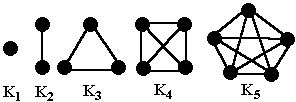
 nauty finds two matching graphs
But something quite amazing is that it isn't very long before the machines
are overwhelmed too. In the final analysis the matching sometimes has to be
done "the hard way," which involved re-ordering all of the nodes in a matrix,
which takes NN! (Number of Nodes factorial) steps, and at each step comparing
two matrices.
( en.wikipedia.org/wiki/Factorial )
This explodes pretty fast. Yet the Mathematica package does have a function
in its Combinatorica package called NumberOfGraphs[n], which gives "the
number of nonisomorphic simple graphs on n nodes" and I reproduce some values
below.
nauty finds two matching graphs
But something quite amazing is that it isn't very long before the machines
are overwhelmed too. In the final analysis the matching sometimes has to be
done "the hard way," which involved re-ordering all of the nodes in a matrix,
which takes NN! (Number of Nodes factorial) steps, and at each step comparing
two matrices.
( en.wikipedia.org/wiki/Factorial )
This explodes pretty fast. Yet the Mathematica package does have a function
in its Combinatorica package called NumberOfGraphs[n], which gives "the
number of nonisomorphic simple graphs on n nodes" and I reproduce some values
below.

 synthespian Max Headroom does a celebrity endorsement
synthespian Max Headroom does a celebrity endorsement
 banner outside Adventurers Club
(photo from etixland
www.etixland.com/ADVCLUB/ACMain/ACmain.htm)
banner outside Adventurers Club
(photo from etixland
www.etixland.com/ADVCLUB/ACMain/ACmain.htm)
 cover of Advance Program for AVS '93 User Group
cover of Advance Program for AVS '93 User Group
 pool at Port Orleans French Quarter Hotel,
Walt Disney World, Orlando; pic from AllEars.net
land.allears.net/blogs/guestblog/2008/04/
pool at Port Orleans French Quarter Hotel,
Walt Disney World, Orlando; pic from AllEars.net
land.allears.net/blogs/guestblog/2008/04/ AVS93 program page 6
AVS93 program page 6
 view of Shark Reef at Typhoon Lagoon from
http://www.ourlaughingplace.com/asp/
attraction.aspx?attractionID=SR#.UWhUOIKF43A
view of Shark Reef at Typhoon Lagoon from
http://www.ourlaughingplace.com/asp/
attraction.aspx?attractionID=SR#.UWhUOIKF43A
 Google satellite view of Cross Roads Shopping Center,
12549 County Road 535, Orlando, FL 32836
Google satellite view of Cross Roads Shopping Center,
12549 County Road 535, Orlando, FL 32836
 Anne Hering as Mandora, in the
Adventurers Club Mask Room
Anne Hering as Mandora, in the
Adventurers Club Mask Room
 a portion of a drink menu
at the Adventurers Club
a portion of a drink menu
at the Adventurers Club
